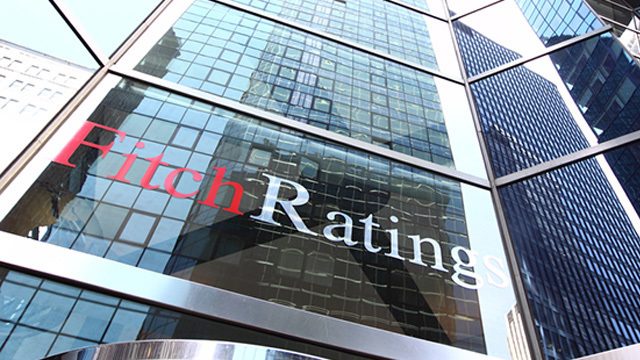SUMMARY
This is AI generated summarization, which may have errors. For context, always refer to the full article.

MANILA, Philippines (UPDATED) – Credit rating agency Fitch Ratings upgraded the Philippines’ Long-Term Foreign-Currency Issuer Default Rating (IDR) from BBB- to BBB, with a stable outlook, amid favorable economic conditions and planned tax reform.
Fitch noted that “strong and consistent macroeconomic performance has continued, underpinned by sound policies that are supporting high and sustainable growth rates.”
“Investor sentiment has also remained strong, which is evident from solid domestic demand and inflows of foreign direct investment,” it added.
According to Fitch, investor confidence has not been dampened by the country’s bloody drug war.
“There is no evidence so far that incidents of violence associated with the administration’s campaign against the illegal drug trade have undermined investor confidence,” said the credit watcher.
Fitch sees real gross domestic product (GDP) growth of 6.8% in 2018 and 2019, which it noted would maintain the Philippines’ place among the fastest-growing economies in the Asia-Pacific region.
Fitch also said that the country maintained fiscal policies geared toward a sustained decline in the gross general government debt (GGGD) ratio, with GGGD projected by Fitch to decline to around 34% of GDP at end-2017, below the BBB median of 41.1% of GDP.
“We are pleased that Fitch is finally convinced that the Philippine economy now is much stronger and more resilient than in 2013, when they granted the Philippines its first investment grade credit rating of BBB-,” Finance Secretary Carlos Dominguez III said in a statement.
“Our growth prospects are also brighter compared with those of our neighbors and peers. The Duterte administration is fast-tracking crucial structural reforms – including the Comprehensive Tax Reform Program, the bold infrastructure development agenda, and liberalization of the investment regime. All this will help accelerate economic expansion, spread development, and increase income in lagging regions,” he added.
“While we are not targeting ratings per se, I am confident that with these reforms, there will be more positive rating actions in the next couple of years.”
For his part, Socioeconomic Planning Secretary Ernesto Pernia said that “the upgraded rating reflects the steady and strong economic performance of the Philippines and the firm confidence of investors.”
He added: “This positive outlook and ratings from global credit watchers encourages the whole of government to be more efficient and swift in executing the needed policy reforms, programs, and projects laid out in the Philippine Development Plan 2017-2022.”
Tax reform and the deficit
Fitch took the Philippines’ proposed tax reform program into account and expects the country’s fiscal profile to improve as a result of it.
Both the Senate and the House of Representatives have passed their versions of the first tax reform package and are now holding bicameral talks. The tax reform package could be signed into law by the end of the year.
“We estimate the bill to be net revenue positive, reflecting an expansion of the value-added tax base and higher taxes on petroleum products, automobiles, and on sugar-sweetened beverages, which would more than offset a lowering of personal income taxes,” Fitch said.
Pernia called for support for the tax reform program, saying it would ramp up economic growth.
“This tax reform package will boost the country’s revenue-to-GDP ratio, fund the Build, Build, Build program, and also increase the spending capacity of the poor and the working Filipino,” he said.
Low government revenues have been a long-standing weakness in the Philippines’ fiscal profile. Fitch noted that general government revenues were around 18.5% of GDP at end-2017, compared with 28.8% for the BBB median.
Meanwhile, current account is expected to shift into a deficit in 2017, the second straight year, with Fitch saying the trend could continue in 2018 and 2019.
But the credit watcher expects the deficits to be manageable at less than -0.5% of GDP.
“Strong imports of capital goods, associated with the government’s public infrastructure program, are likely to remain a key driver of the deficit, although these will be partly offset by strong remittance inflows and business process outsourcing (BPO) receipts,” Fitch said.
“Foreign direct investment (FDI) inflows will continue to fully cover the current account deficit, limiting the increase in external indebtedness. The Philippines will continue to be a strong net external creditor in 2018 and 2019. At end-2017, its net external creditor position is projected at -14.2% of GDP, compared with ‘BBB’ median of -0.8% of GDP,” it added. – Rappler.com
Add a comment
How does this make you feel?
![[In This Economy] Is the Philippines quietly getting richer?](https://www.rappler.com/tachyon/2024/04/20240426-Philippines-quietly-getting-richer.jpg?resize=257%2C257&crop=194px%2C0px%2C720px%2C720px)
![[In This Economy] A counter-rejoinder in the economic charter change debate](https://www.rappler.com/tachyon/2024/04/TL-counter-rejoinder-apr-20-2024.jpg?resize=257%2C257&crop=267px%2C0px%2C720px%2C720px)
![[Vantage Point] Joey Salceda says 8% GDP growth attainable](https://www.rappler.com/tachyon/2024/04/tl-salceda-gdp-growth-04192024.jpg?resize=257%2C257&crop_strategy=attention)
![[ANALYSIS] A new advocacy in race to financial literacy](https://www.rappler.com/tachyon/2024/04/advocacy-race-financial-literacy-April-19-2024.jpg?resize=257%2C257&crop_strategy=attention)

There are no comments yet. Add your comment to start the conversation.